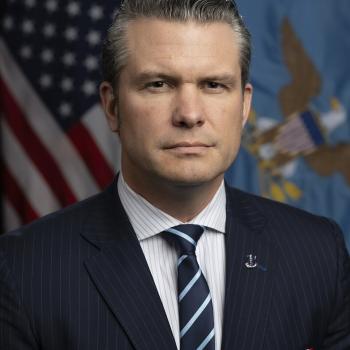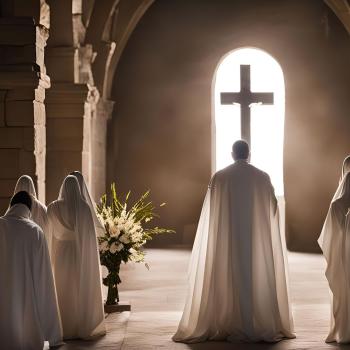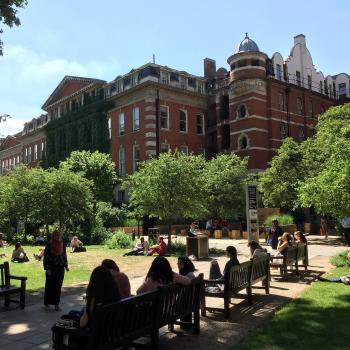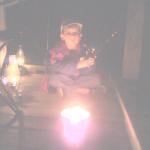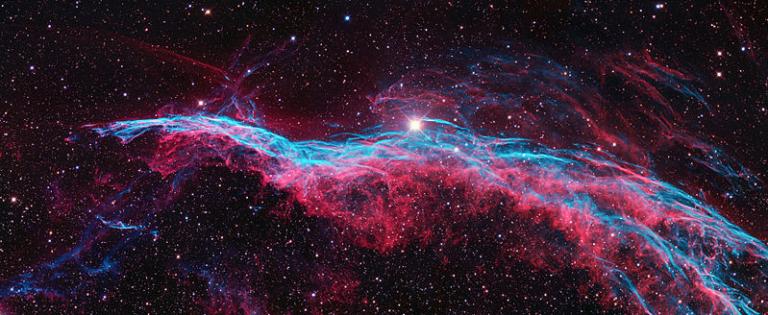
Vital Signs 43/4 (2024), the current issue of the newsletter of the International Association for Near-Death Studies (IANDS), includes the text of a letter (dated 30 October 2024) that was sent by Dr. Janice Miner Holden, who currently serves as the president of IANDS, to the actor Al Pacino.
Mr. Pacino recently experienced an acute health crisis, and Dr. Holden is responding to a public comment that he made about it. She expresses gratitude that he is still around, and then explains why she felt that she should write to him:
From your description, you did not have an NDE; you had a close brush with death without an NDE. Like you, about 85% of people survive their close brush with no memory of anything — or anything unusual. But about 15% of people report that during the medical crisis, they had a vivid, emotionally intense experience of lucidly perceiving the material world from a position outside the physical body and/or perceiving and interacting with beings and environments not of the material world. Afterwards, experiencers are usually profoundly changed.
Here’s the paragraph, though, that struck me as most important:
We researchers haven’t yet found a difference between people who do or who-like you-don’t report an NDE following what seem to be identical physical medical crises. Because you don’t remember anything from your cardiac arrest, it makes sense that you would conclude that nothing exists beyond this life. However, among people who have had multiple close brushes with death due to a serious chronic medical condition or to just being unlucky, they sometimes report an NDE and other times do not. For this reason, one can’t conclude from one experience that consciousness does not continue after physical demise. Be prepared for the possibility of a very different experience the next time you come close to death!
Critics of NDEs have often urged against me the fact that most people who come close to dying or who actually seem, temporarily, to be dead do not report having had an experience of extraordinary consciousness or extreme lucidity while in that state. But a substantial minority of such people do return with such reports And it’s true that we don’t know why some do and some don’t. But the fact seems to me very significant that, among people who have “died” more than once, some report NDEs on some occasions but not on others.
I think that I’ll go on to quote two more paragraphs from Dr. Holden’s letter to Mr. Pacino:
Despite many unanswered questions, we researchers now know a great deal. For example, 5-10% of the population have reported an NDE. Experiencers usually say that their perception during the NDE was vivid and was as real or more realthan reality as experienced in the physical body. And beyond being subjectively real, in many cases the experiencer learned
something during their NDE that was not previously known to them but turned out to be accurate; these cases have recently been compiled into the second edition of the book The Self Does Not Die. After NDEs, most experiencers lose their fear of death because they know from experience that their consciousness continued functioning apart from their disabled body.Most researchers who have studied NDEs and related experiences deeply have concluded that human consciousness is not a product of the brain and that it survives physical demise. A good source on this topic is the Bigelow Contest Essays in which many of the leading figures in the field of near-death studies compiled the voluminous evidence for the survival of consciousness after physical death. For an overview of NDEs themselves, an excellent source is the book After by psychiatrist Bruce Greyson of the University of Virginia, the leading researcher in the field of near-death studies. The IANDS Fact Sheet: Near-Death Experiences (NDEs) offers an even more concise summary.

(Wikimedia commons public domain photograph)
Newly posted on the website of the Interpreter Foundation: The Temple: Past, Present and Future: “Cherubim and Seraphim: Iconography in the First Jerusalem Temple,” written by John Gee:
Part of our book chapter reprint series, this article originally appeared in The Temple: Past, Present and Future, edited by Stephen D. Ricks and Jeffrey M. Bradshaw. For more information, go to https://interpreterfoundation.org/books/the-temple-past-present-and-future/. For video and audio recording of this conference talk, go to https://interpreterfoundation.org/conferences/2020-temple-on-mount-zion-conference/videos/gee/.
“A number of passages in the Hebrew Bible describe the temple and its iconography. Two of the features of the temple are the presence of cherubim and seraphim. These were well known to the writers of the Bible, but the images that spring to the modern western mind are probably not correct. I will demonstrate what the ancient iconography of these figures was and how we know that this is correct. ”
A helpful note for anybody who might find this difficult and bewildering: The piece to which I link above is part of our book chapter reprint series. It is not an article in Interpreter: A Journal of Latter-day Saint Faith and Scholarship. Items in our book chapter reprint series appear on Thursdays. (Today is Thursday.) Articles in the Journal appear on Fridays. (Today is not Friday. Tomorrow will be Friday.) I hope this helps!

I was unaware of it until yesterday, but Jeff Lindsay posted an entry at his Arise from the Dust blog back on 18 September 2024 about his resignation as executive editor of Interpreter: A Journal of Latter-day Saint Faith and Scholarship. (He remains a member of the Interpreter Foundation’s board of directors.) This is what he had to say: “I’ve Stepped Down from My Executive Editor Role with Interpreter: A Journal of Latter-day Saint Faith and Scholarship, but Remain a Fan”
One particular passage in Jeff Lindsay’s little article caught the attention of the Peterson Obsession Board cast member who goes by a pseudonym resembling “Everybody’s WC”:
“I recently told a granddaughter,” Brother Lindsay wrote, “that serving in that role [as an executive editor and gatekeeper for Interpreter] was like being a bishop over a large ward of numerous papers, almost all in need of some repentance and many of which needed excommunication . . . .”
To EWC, “That’s another pretty damning public repudiation of the Interpreter’s “scholarship.””
However, I invite you to try to parse these sentences, which also come from Jeff Lindsay’s little article, as a “public repudiation of the Interpreter’s ‘scholarship'”:
I remain a strong fan of Interpreter and have already begun working on a couple of contributions for it that I plan to submit shortly.
I hope you’ll read and learn from Interpreter. There are so many gems there that demand more attention.
Brother Lindsay’s comparison of his editorial work with Interpreter to the labors of a bishop over a large and challenging ward could also, of course, be understood as reflecting the high editorial standards that we try to maintain at the Interpreter Foundation and the demands that such standards make on an editor and gatekeeper.
But such an understanding wouldn’t fit the narrative that EWC has sought to maintain over multiple years of distortion and, often, brazen mendacity.
At this very moment, for example, although he monitors my blog like a meth-fueled hawk for anything and everything that he might be able to deploy against me, he has thus far refused to acknowledge repeated flat denials of his anonymous, vague, unsupported, and false allegation that, some years ago, I deliberately sought to destroy the family and the career of a BYU colleague. I’ve challenged him to furnish at least some evidence in support of what is, otherwise, merely yet another redundant example of his continual slanders against me.
But his reasoning is amusing. I’ll give him that. By the same logic, were he so inclined, he could point to the fact that Harvard University and the California Institute of Technology reject approximately 97% of those who apply for undergraduate admission as evidence for the low quality of their applicants.
Posted from Newport Beach, California




